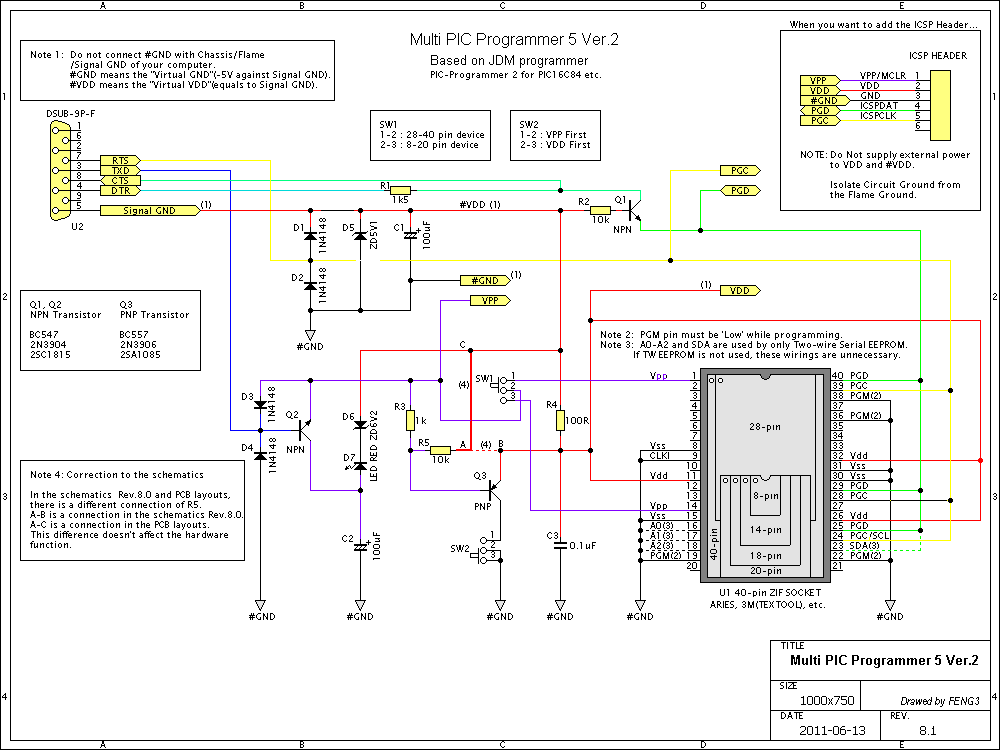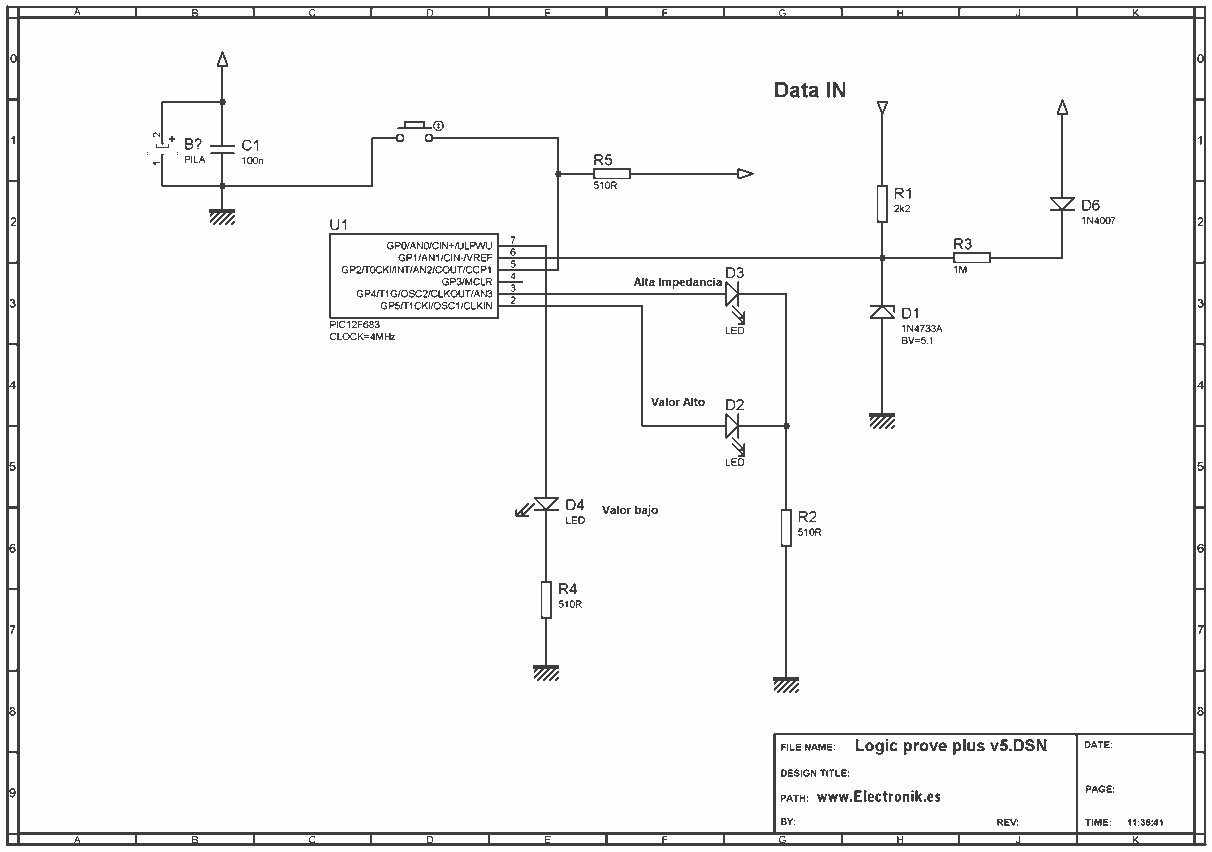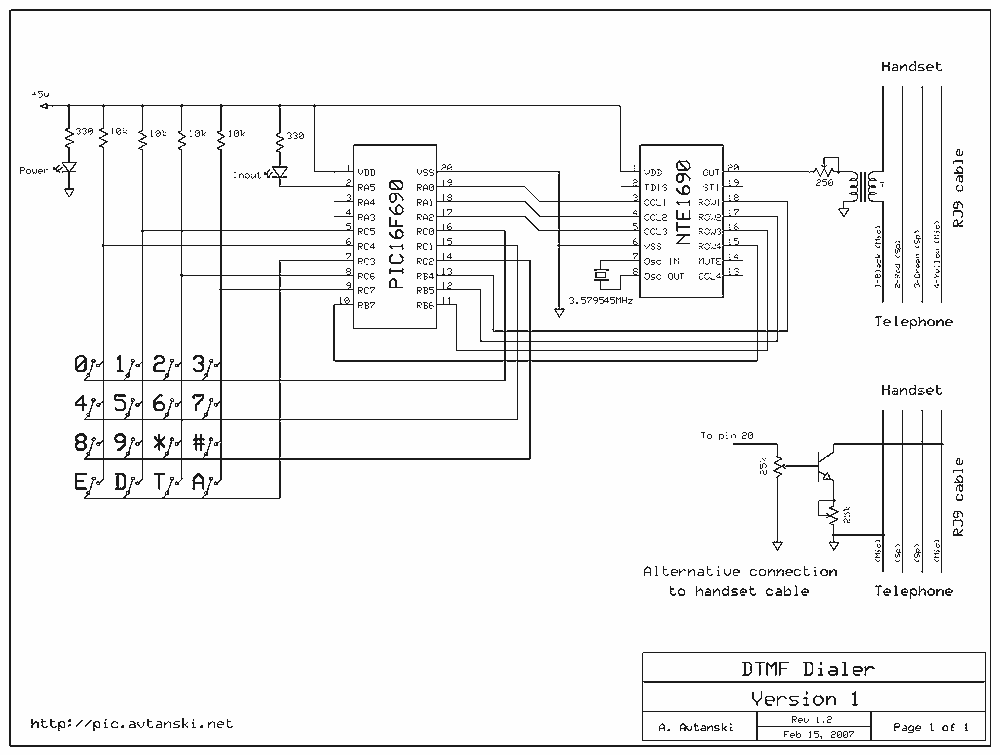
JDM pic programmer help required

For the following circuit of the JDM PIC microcontroller programmer, information is needed regarding the PIC microcontroller pins that receive the RS232 signals.
The JDM PIC microcontroller programmer is a widely used circuit for programming PIC microcontrollers via the RS232 interface. The RS232 communication standard utilizes a set of pins on the PIC microcontroller for receiving serial data. Typically, the relevant pins on the PIC microcontroller include the RX (Receive) pin and potentially other signal lines depending on the specific implementation of the circuit.
In a standard configuration, the RX pin is responsible for receiving the incoming data from the RS232 interface. The signal levels of RS232 are typically inverted compared to TTL logic levels, meaning that a logic high is represented by a negative voltage, and a logic low is represented by a positive voltage. To interface the RS232 signals with the PIC microcontroller, a level-shifting component, such as a MAX232 or a similar RS232 to TTL converter, is often employed. This component converts the RS232 voltage levels to TTL levels that the PIC can interpret correctly.
In addition to the RX pin, the circuit may also utilize the TX (Transmit) pin, which sends data from the PIC microcontroller back to the RS232 interface. Other control signals, such as RTS (Request to Send) and CTS (Clear to Send), may also be involved depending on the complexity of the communication protocol being used.
When designing or analyzing the JDM programmer circuit, it is crucial to consult the specific datasheet for the PIC microcontroller in use, as pin assignments and functionalities may vary between different models. Proper attention to the connection and configuration of these pins ensures reliable communication between the PIC microcontroller and the programming interface.For the following circuit of the JDM pic microcontroller programmer I need information about the PIC microcontroller pins which receive the RS232.. 🔗 External reference
The JDM PIC microcontroller programmer is a widely used circuit for programming PIC microcontrollers via the RS232 interface. The RS232 communication standard utilizes a set of pins on the PIC microcontroller for receiving serial data. Typically, the relevant pins on the PIC microcontroller include the RX (Receive) pin and potentially other signal lines depending on the specific implementation of the circuit.
In a standard configuration, the RX pin is responsible for receiving the incoming data from the RS232 interface. The signal levels of RS232 are typically inverted compared to TTL logic levels, meaning that a logic high is represented by a negative voltage, and a logic low is represented by a positive voltage. To interface the RS232 signals with the PIC microcontroller, a level-shifting component, such as a MAX232 or a similar RS232 to TTL converter, is often employed. This component converts the RS232 voltage levels to TTL levels that the PIC can interpret correctly.
In addition to the RX pin, the circuit may also utilize the TX (Transmit) pin, which sends data from the PIC microcontroller back to the RS232 interface. Other control signals, such as RTS (Request to Send) and CTS (Clear to Send), may also be involved depending on the complexity of the communication protocol being used.
When designing or analyzing the JDM programmer circuit, it is crucial to consult the specific datasheet for the PIC microcontroller in use, as pin assignments and functionalities may vary between different models. Proper attention to the connection and configuration of these pins ensures reliable communication between the PIC microcontroller and the programming interface.For the following circuit of the JDM pic microcontroller programmer I need information about the PIC microcontroller pins which receive the RS232.. 🔗 External reference





